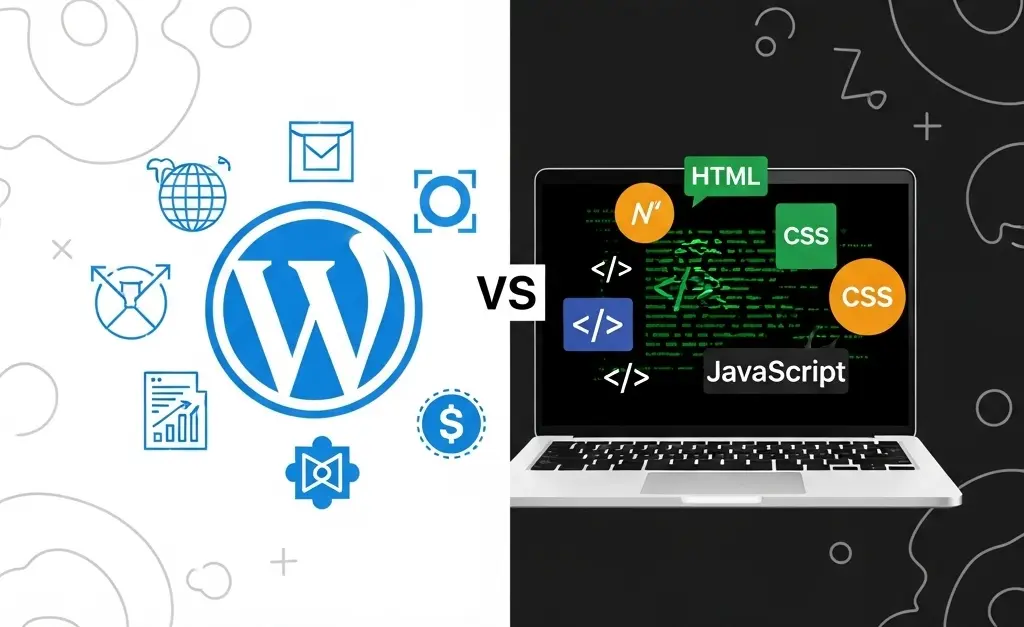The Future of WordPress: Trends, Predictions & Insights
Introduction
WordPress is not just another content management system—it is the backbone of the modern web. Today, it powers more than 43% of all websites worldwide, ranging from personal blogs and portfolios to large eCommerce stores and news portals. Its flexibility, open-source nature, and massive ecosystem of plugins and themes have made it the go-to platform for millions of users.
But an important question arises: what does the future of WordPress look like? Can it continue to dominate the digital space, or will newer platforms gradually take over?
In this article, we’ll dive deep into the current state of WordPress, upcoming features, major trends, challenges, and the reasons why it may remain the leader in web development for many years to come.
The Current State of WordPress
WordPress has grown far beyond its early days as a blogging platform. As of now, over 810 million websites are built with WordPress, making it the most widely used CMS in the world.
- WooCommerce integration has turned it into a powerhouse for eCommerce, allowing businesses of all sizes to sell products online.
- Thousands of free and premium plugins and themes make it possible to build almost any type of website—from simple landing pages to complex enterprise portals.
- Its open-source nature encourages constant improvement, supported by a global community of developers and contributors.
Clearly, WordPress is still thriving. But where is it headed next?
The Future of WordPress
1. Gutenberg Editor Evolution
The Gutenberg block editor has been one of the biggest changes in WordPress history. What started as a block-based text editor is evolving into a full drag-and-drop site builder. This means users will be able to design professional websites without needing external page builders or coding knowledge. In the near future, Gutenberg is expected to rival tools like Elementor or Divi.
2. WordPress as a Headless CMS
Another exciting direction is the rise of headless WordPress. Developers are increasingly using WordPress only for backend content management while connecting it to modern JavaScript frameworks like React, Vue, and Angular on the front end. This approach allows faster, more scalable, and app-like websites. It makes WordPress not just a CMS but a flexible engine for powering modern web applications.
3. Artificial Intelligence Integration
Artificial intelligence is rapidly transforming every industry, and WordPress is no exception. AI tools are being integrated for content generation, SEO optimization, automated design suggestions, and image creation. In the future, WordPress will likely have more built-in AI features, helping creators save time while improving quality.
4. Improved Security
Security has always been a concern because of WordPress’s massive user base. Hackers often target it, but the platform is getting stronger with every update. Core improvements, combined with advanced security plugins like Wordfence or Sucuri, are making it more secure. Future versions are expected to include even better protection against cyber threats.
5. Expansion in eCommerce
Despite tough competition from Shopify and Wix, WooCommerce continues to dominate global eCommerce. It currently powers a huge portion of online stores worldwide. As digital shopping grows, WordPress will add more advanced eCommerce features, making it a powerful alternative to SaaS-based platforms.
Why WordPress Will Continue to Thrive
There are several reasons why WordPress is likely to maintain its leadership:
- It is free and open-source, making it accessible to anyone.
- Scales easily from small blogs to enterprise-level websites.
- Backed by a massive community of developers, designers, and contributors worldwide.
- Highly adaptable, with the ability to integrate new technologies like AI, headless CMS, and cloud hosting.
Simply put, WordPress is built to evolve—something many other platforms struggle to achieve.
Challenges Ahead
Of course, WordPress is not without its challenges.
- Competition from SaaS website builders like Wix, Squarespace, and Webflow, which offer easy “plug-and-play” solutions for beginners.
- Security threats due to its popularity, requiring constant updates and vigilance.
- The need for regular maintenance, which some beginners may find overwhelming.
Still, these challenges are not unique to WordPress. With its strong community and constant innovation, it has the resources to overcome them.
Conclusion
WordPress has come a long way from being a simple blogging platform. Today, it is a complete ecosystem powering millions of websites across the globe. Looking ahead, the future of WordPress appears bright, sustainable, and full of innovation.
With the continuous evolution of Gutenberg, the rise of headless CMS usage, deeper AI integration, stronger security, and expanding eCommerce capabilities, WordPress is expected to remain at the top of the web development industry.



